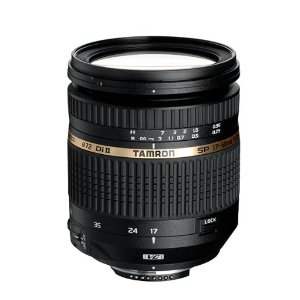Reviews
Tamron 17-50mm f/2.8 VC Lens Review
 One benefit to cropped body cameras is the additional choice of lenses. While full frame camera’s enjoy only the 28-70mm range for zoom coverage, cropped sensor bodies use the equivalent 17-50mm range to achieve the same results. The typical challengers in this range are the Nikon 17-55 f/2.8, Canon 17-55 f/2.8 IS, Sigma 17-50 f/2.8 OS, and the Tamron 17-50 f/2.8 VC. All of these choices, except for Nikon offer image stabilization and all offer the coveted f/2.8 wide open aperture. While both the Canon & Nikon are priced at over $1200, the Sigma and Tamron offer similar results at half the cost. Look for upcoming reviews on other lenses in this category
One benefit to cropped body cameras is the additional choice of lenses. While full frame camera’s enjoy only the 28-70mm range for zoom coverage, cropped sensor bodies use the equivalent 17-50mm range to achieve the same results. The typical challengers in this range are the Nikon 17-55 f/2.8, Canon 17-55 f/2.8 IS, Sigma 17-50 f/2.8 OS, and the Tamron 17-50 f/2.8 VC. All of these choices, except for Nikon offer image stabilization and all offer the coveted f/2.8 wide open aperture. While both the Canon & Nikon are priced at over $1200, the Sigma and Tamron offer similar results at half the cost. Look for upcoming reviews on other lenses in this category
Build Quality
The Tamron 17-50mm f/2.8 VC feels solid in your hand. While plastic, it has a premium weight to it with a solid grip and great feel. While not quite up to par with Canon L lenses, we doubt anyone will have a problem with the construction. On a canon 60D, Nikon D7000, or other mid range body, the lens feels great. It may be a little heavy and large for some on the smallest camera bodies, but it will not overpower the camera. The lens comes with a hood which seemed to work well at controlling sun flare in most cases, as well as protect the front of the lens from most elements.
In the field
This is where the Tamron 17-50 began to show some weakness. While adequately sharp at shorter focal distances, the Tamron lost sharpness quickly when zooming in. Soft picture were a common occurrence when taking portraits or other photographs with large amounts of detail. Focusing was also a mixed bag when mounted on the Canon 60D for most of the focus points. The Canon 60D, as well as most other cropped bodies, does not allow for front/back focus adjustment either leaving you with the default results. The focusing motor seamed slow in practice but this may be largely due to the volume of the focusing motor. While not defining, it is easily heard above other camera operations and will take some time to get used to. There was also a significant amount of volume for the image stabilizer, and a noticeable feel and movement of the lens when the operation kicked in. The stabilizer did however work as advertised and great results were achieved at relatively show shutters. Under most conditions, you will see a 3 stop advantage with the stabilizer on. Other advantages resulted from the camera specs itself. With an f/2.8 constant aperture, low light capabilities were enhanced, and smooth bokeh could be seen, especially at 50mm. Of course, with less than stunning results from a sharpness standpoint, the full results were still disappointing.
Conclusion
Compared to the standard kit lenses of all cropped sensor DSLRs, the Tamron’s f/2.8 max aperture offers a welcome advantage. During low light shoots where most kit lenses become useless, the Tamrom still achieved decent results. It also allows for great portraits by providing good bokeh with clean separation of the subject from the background. Unfortunately, with low sharpness performance, noisy & slow focusing, and inconsistent results, the Tamron did not achieve the results of the competition. Both the Nikon and the Canon offered better results, while even the Sigma demonstrated sharper images. While the Tamron’s specs and performance offer an advantage to the standard kit lenses, better results may be achieved with the Sigma, Nikon, or Canon models.










